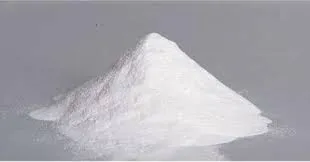
Nov . 13, 2024 09:37 Back to list
hec cellulose
The Versatility of HEC (Hydroxyethyl Cellulose) in Modern Applications
Hydroxyethyl cellulose (HEC) is a non-ionic, water-soluble polymer derived from cellulose, a natural polymer found in the cell walls of plants. With its unique properties, HEC has found a wide array of applications across various industries, ranging from pharmaceuticals to construction, and from food to cosmetics. Its versatility and effectiveness stem from its ability to function as a thickener, emulsifier, film-former, and stabilizer, making it a valuable ingredient in numerous formulations.
One of the most notable characteristics of HEC is its excellent thickening capability. In the cosmetics and personal care industry, HEC is commonly used in products such as lotions, creams, and gels. It provides the desired viscosity and texture, allowing for improved application and user experience. Furthermore, HEC enhances the stability of emulsions and suspensions, preventing the separation of ingredients in formulations. This property is particularly important in products where uniform distribution of active ingredients is essential for efficacy.
The Versatility of HEC (Hydroxyethyl Cellulose) in Modern Applications
The construction industry has also embraced HEC for its superior thickening properties. It is widely used in cement, gypsum, and plaster formulations to improve workability and adhesion. By enhancing the flow properties of these materials, HEC allows for better application techniques and reduces the risk of cracking and shrinkage as the materials cure. Furthermore, HEC acts as a water retention agent, which is essential for ensuring adequate hydration of the cement during the curing process.
hec cellulose

In the food industry, HEC serves as a food additive that can improve texture and stability in various products. It is employed in sauces, dressings, and bakery goods to achieve the desired consistency and mouthfeel. The use of HEC also extends to gluten-free formulations, where it can mimic the binding and thickening properties commonly provided by gluten, thus enhancing the texture of gluten-free products.
The environmental advantages of HEC cannot be overlooked. As a cellulose derivative, HEC is derived from renewable plant sources, making it a more sustainable option than many synthetic polymers. Its biodegradability further supports its adoption in eco-friendly formulations, contributing to the reduction of plastic waste and promoting sustainable practices across industries.
Despite its many benefits, the use of HEC requires careful consideration and formulation expertise. Its viscosity and water retention properties can vary significantly depending on the grade and concentration used. Therefore, formulators must conduct thorough testing to ensure optimal performance in their specific applications. Additionally, while HEC is generally recognized as safe, there may be specific regulatory considerations that vary by region, particularly in food and pharmaceutical uses.
In conclusion, hydroxyethyl cellulose is a versatile polymer that has proven its worth across various industries. Its unique properties as a thickener, stabilizer, and emulsifier make it an essential ingredient in cosmetics, pharmaceuticals, food, and construction materials. With growing emphasis on sustainability and eco-friendly solutions, HEC stands out as a renewable, biodegradable option that meets the demands of modern consumers and industries alike. As research and development continue to evolve, the applications and functionalities of HEC are likely to expand further, solidifying its position as a foundational polymer in diverse fields.
-
Versatile Hpmc Uses in Different Industries
NewsJun.19,2025
-
Redispersible Powder's Role in Enhancing Durability of Construction Products
NewsJun.19,2025
-
Hydroxyethyl Cellulose Applications Driving Green Industrial Processes
NewsJun.19,2025
-
Exploring Different Redispersible Polymer Powder
NewsJun.19,2025
-
Choosing the Right Mortar Bonding Agent
NewsJun.19,2025
-
Applications and Significance of China Hpmc in Modern Industries
NewsJun.19,2025







